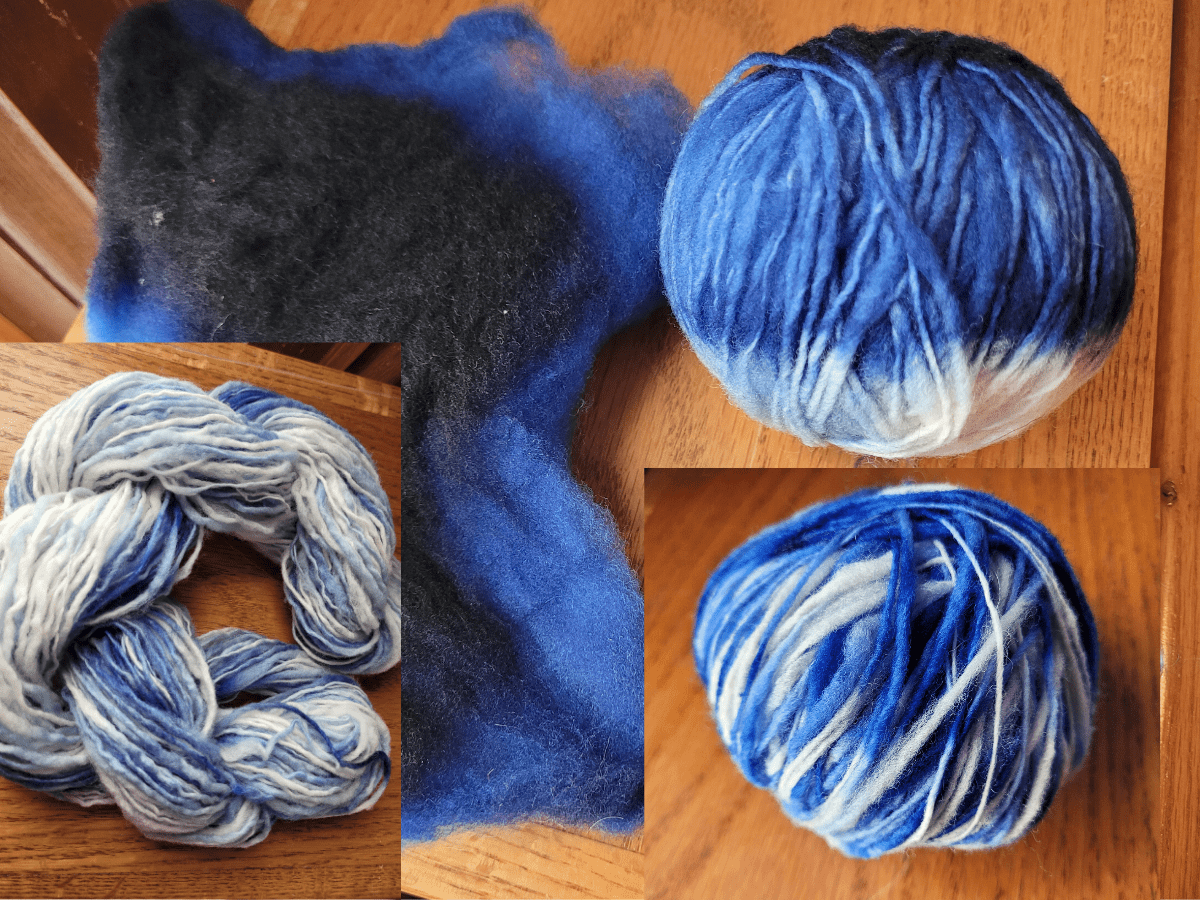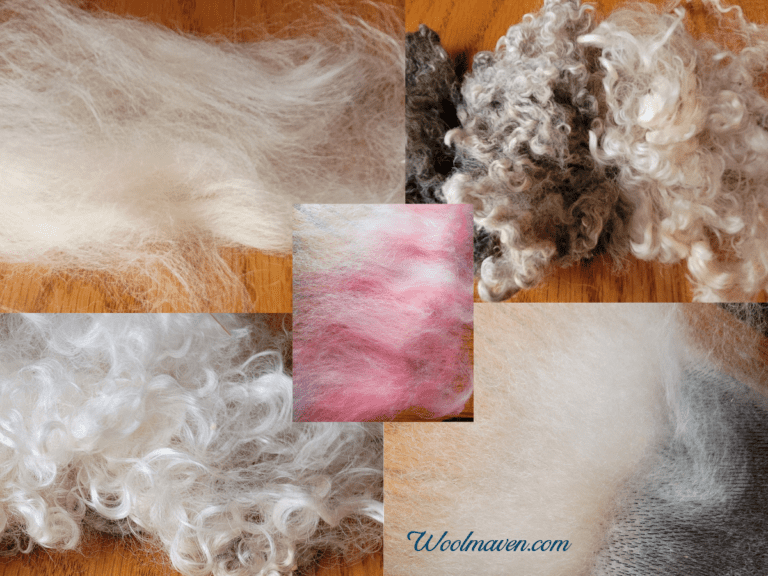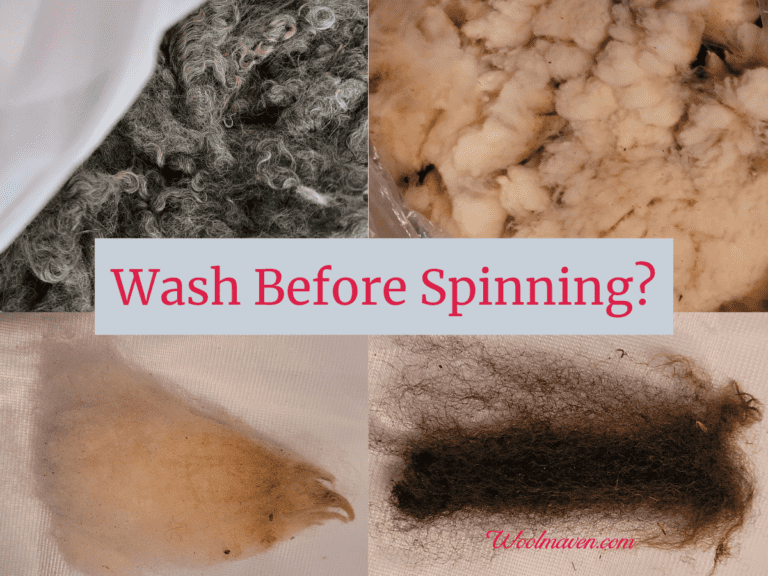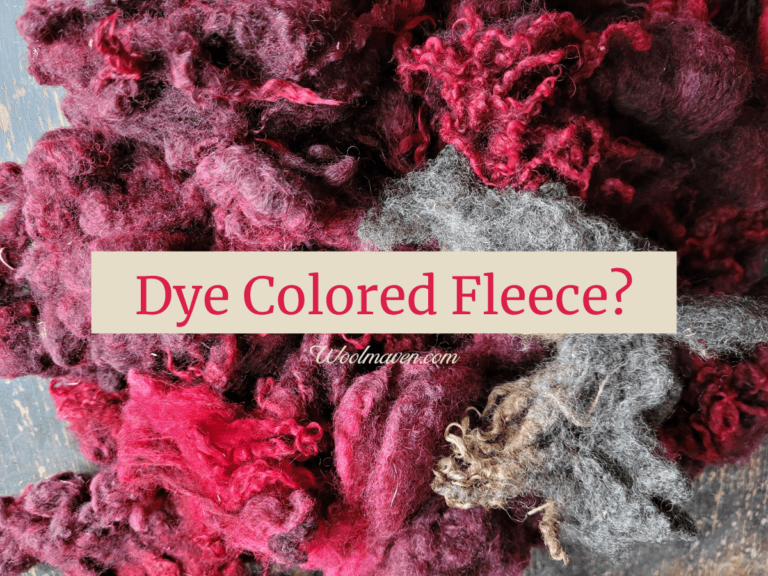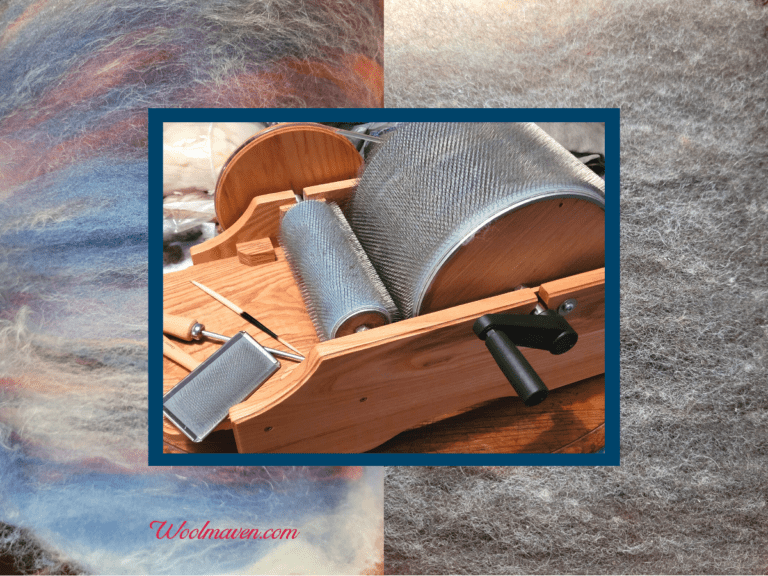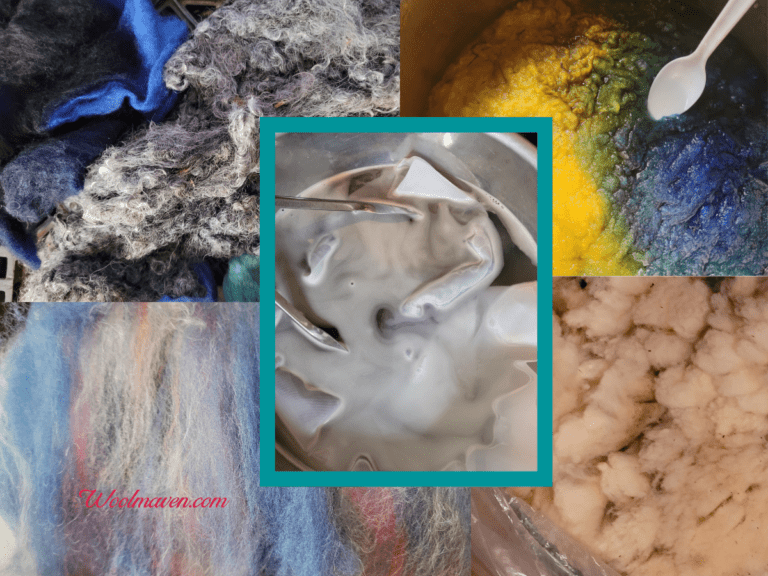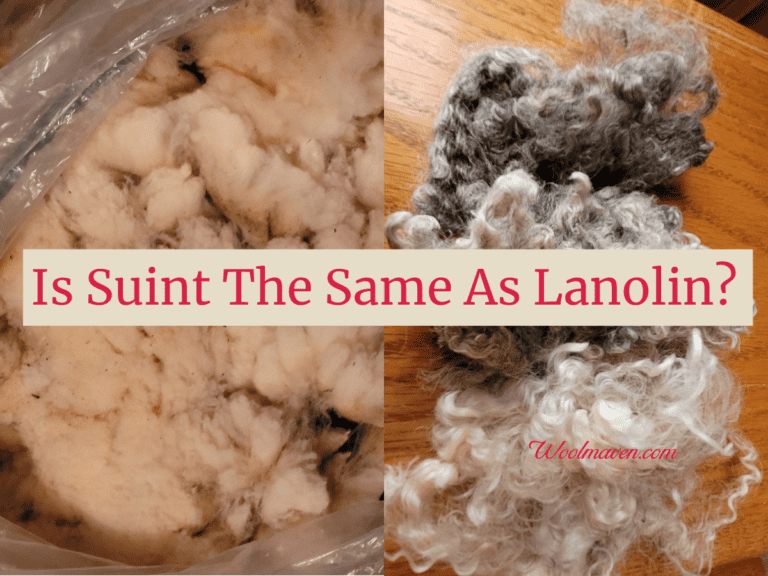When Should You Dye Wool? (fleece to finished project)
If you dye your wool, you’ll get a huge range of color options and near infinitely increase your options! Who doesn’t want that?
Now, the big question is when should you dye the wool, as fleece, yarn or the finished project?
Dye wool before spinning if you want to blend colors, dye yarn for patterns and specific variegations or dye the finished project for consistent color and saturation. For projects in one basic color, dye at any stage.
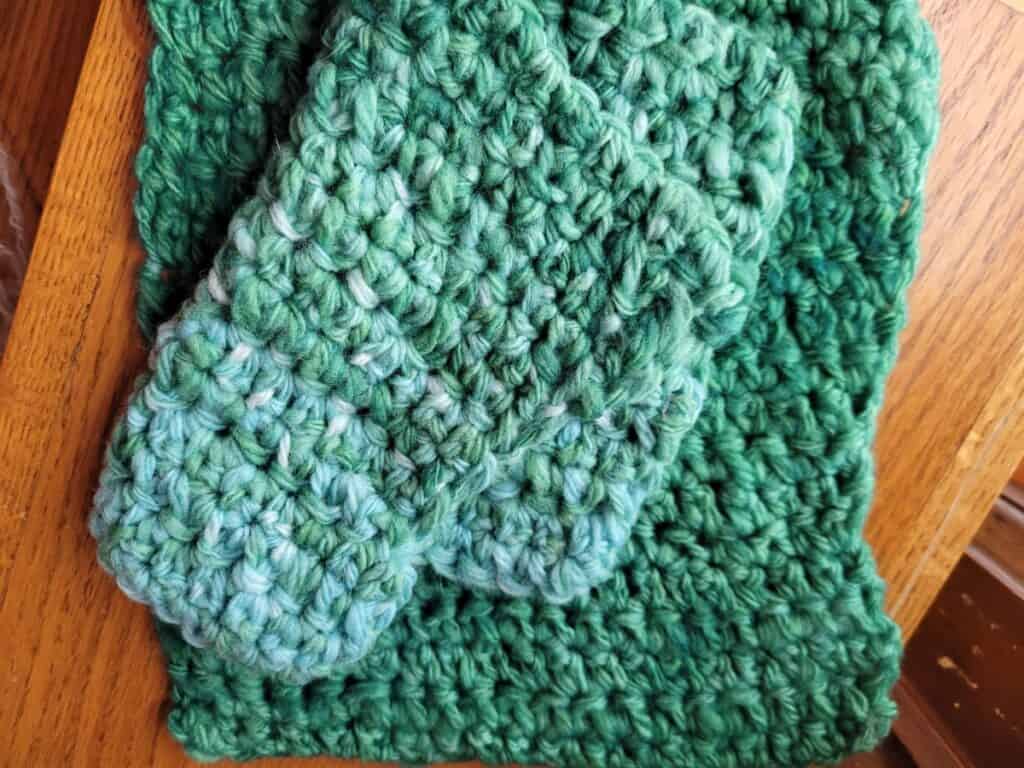
How To Make Roving With Hand Carders shows you some of your options when using hand cards to prepare your wool for handspinning.
This post contains affiliate links, which means I receive commissions if you choose to purchase through links I provide (at no extra cost to you).
Looking for a great resource on which fiber to pick and how best to use it? Consider getting The Fleece And Fiber Sourcebook, filled with wonderful pictures and details on just about any wool you can find.
Dyeing finished project
One of the ways that you can choose to add color to your project is to dye when it is knitted or crocheted as a finished project.
You can purchase your dyes color by color or start with a variety and do some experimenting and get a basic idea of the process of dyeing with a kit. This is what I did, I wanted options and colors to play with!
A dye kit gives you a number of color choices and comes with instructions, it’s a simple and fun way to get started with dyeing protein fibers.
Pros of dyeing finished project
If you decide to dye your finished project rather than dye the yarn or fleece first, you have the advantages of:
- easily keeping the color the same throughout the project
- dye to the color of your choice rather than be limited to the colors available when you purchase fiber
- thinking about color as you work, rather than being stuck with the color you bought or dyed already
Easily keep same color for project
If you dye the finished project, you can keep the same color and saturation throughout the project.
You don’t have to worry about differences in dyebaths or small changes in techniques, since the entire project will all be dyed at once.
Of course, this is assuming that you have practiced up on your dyeing!
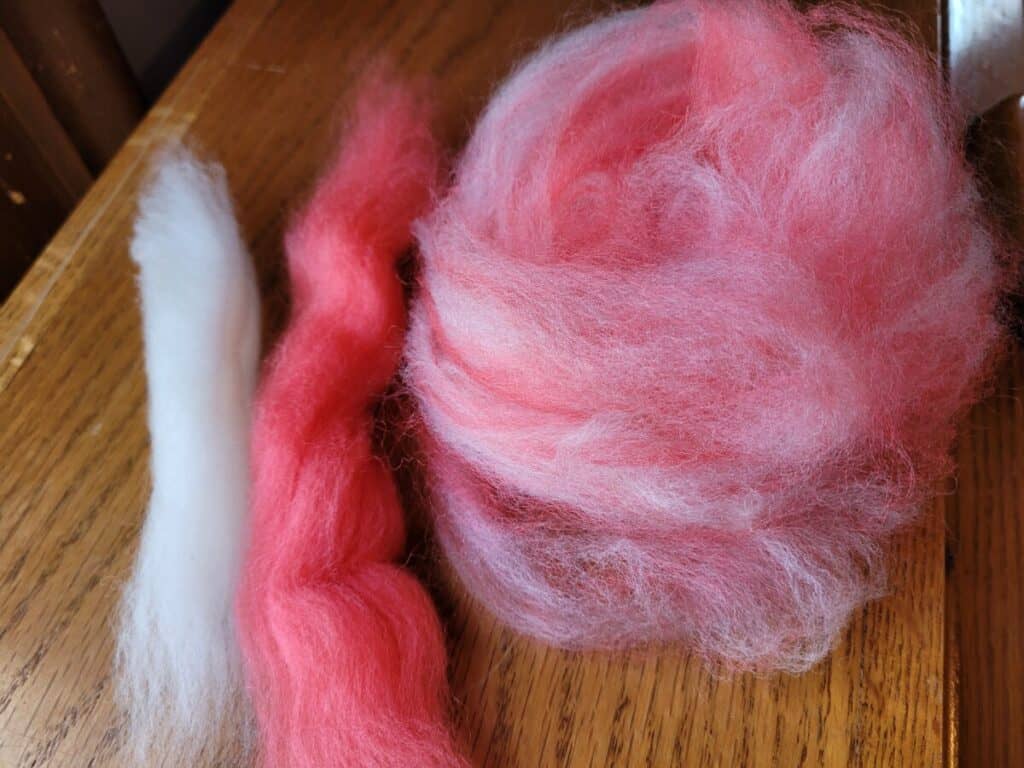
You can make your own colors
Once you get proficient with dyes, you can also make your own colors rather than being stuck with the pre selected choices for the fiber you are using.
You can make all manner of color adjustments when you control the dyebath and dyeing process!
Dye As Fleece Or Yarn? goes over the benefits and drawbacks of dyeing your wool at different stages of handspinning.
Cons of dyeing finished project
Of course, since nothing is perfect, there are some downsides to dyeing the finished project, as well.
A few of the downsides to dyeing the finished project are:
- you may not be able to get the color that you had hoped for, meaning something went wobbly when dyeing
- awkwardly sized finished projects will be harder to dye
- can felt project if not careful
Practice dyeing small projects first
You’ll want to be practiced up on your dyeing before you tackle dyeing a larger finished project, just to make sure you are on your game with dyes.
Make sure that you can get the color you are hoping for and that you have a system down, like when you need to steam set instead of immersion set.
It would be tough to have a carefully handcrafted piece go wobbly on you in the dyebath, due to lack of practice!
Awkward sizes are hard to dye
Anything that you make that is a weird size, especially something really big, will be tough to work with unless you have a mega dyebath!
Also, colors strike (bind to the wool) at different times, so if you have less dye than you need or it is in a hard to reach spot, you’ll get variation that you did not plan on getting in your finished project.
Projects can be accidentally felted
A final potential downside of dyeing finished garments or projects is that you can felt them when they are in the dyebath.
If you are working with a wool that seemingly will felt as soon as you look at it wrong, dyeing a finished project is going to be touchy.
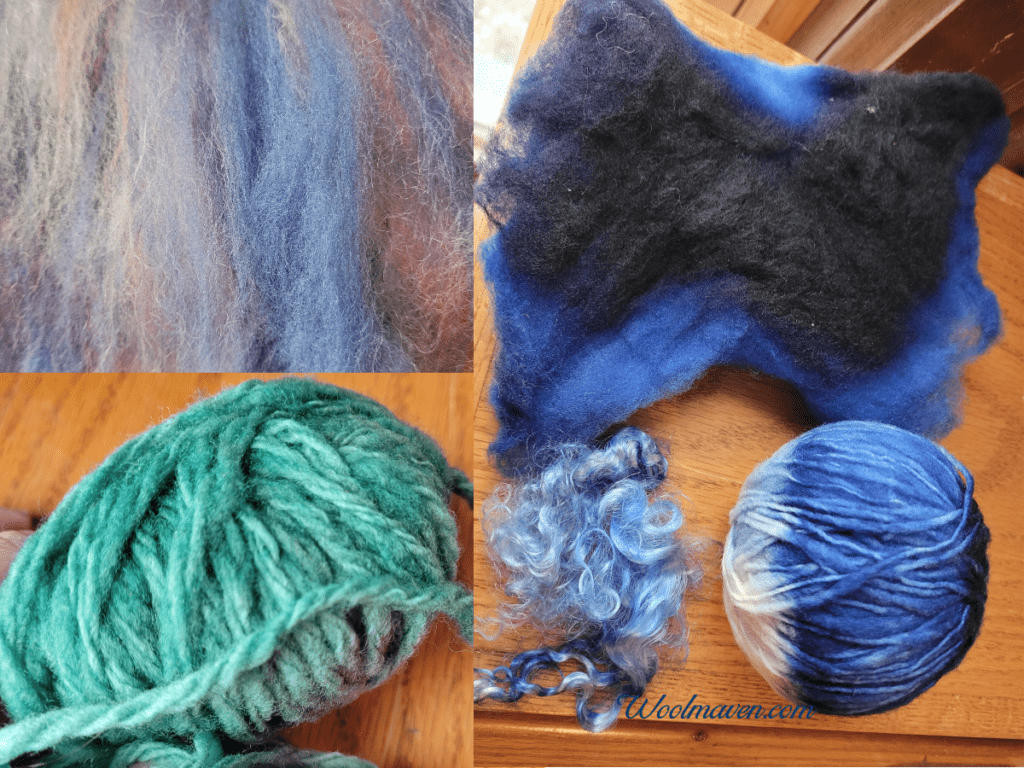
Dyeing handspun yarn
Another popular way to dye wool is to spin it first then dye the yarn.
Pros of dyeing yarn
Some of the advantages of dyeing yarn are:
- make patterns or specific variegations in your yarn
- manageable amount of material to dye
- easy to test batch and adjust if needed
- can dye single ply then ply with different color or pattern for custom yarns
- make abrupt color changes
- make knitting or crocheting more interesting (than working with white)
Easily have patterns or specific variegations
If you dye your yarn, you can easily put in specific patterns or variegations that would be more challenging to put into the yarn as you spin.
It’s possible, for sure, to spin in variety, but it’s easier to put in those specific colors in the spots you want them when you are dyeing.
Less material in the dyebath
This is just a space issue, dyeing one or two skeins of yarn can be done in most any container, not so when you get into the larger amounts of fleece.
You can easily test batch
When you are working with yarn, you can easily test batch and see if you like what you get then repeat or adjust and try again.
If you are working with the finished garment or the fleece, once it’s done you are stuck with it! You can modify but you can’t ever go back.
Dye single ply then combine
Another interesting option is to dye the single ply (or whatever that you have spun) then combine it with another yarn or ply of something, like thread, for a custom yarn.
In this case the dyeing is pretty straight forward, it’s the add on spinning that makes the new to you yarns.
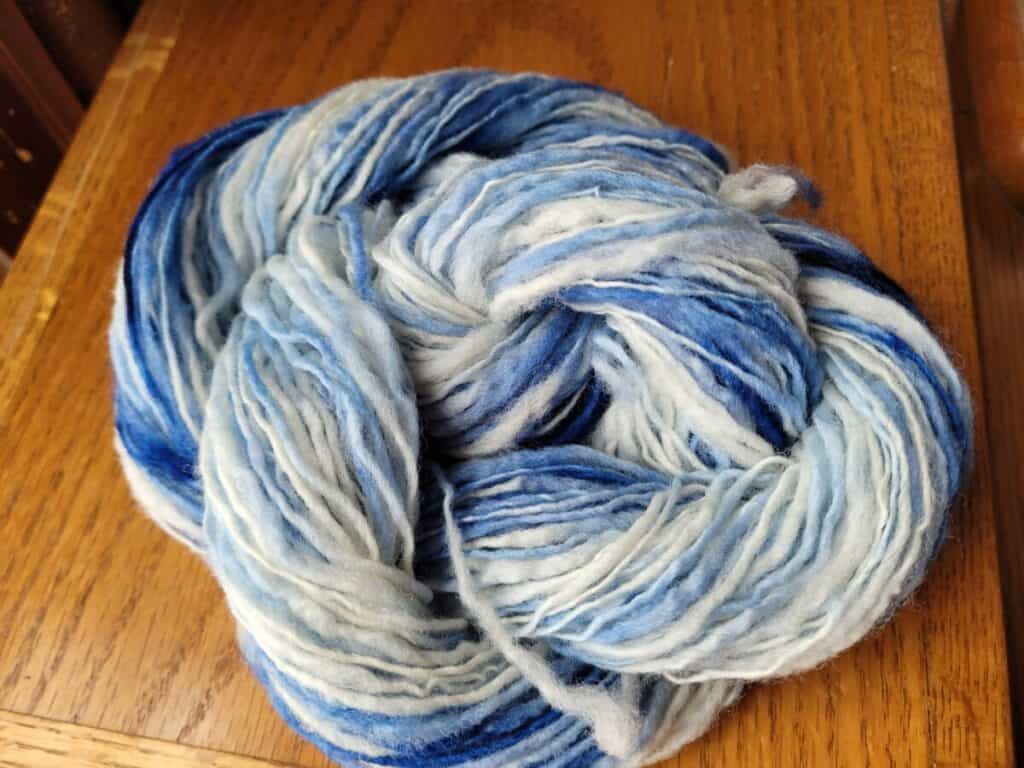
Dye as yarn for abrupt color changes
If you want abrupt color changes, it’s hard to beat dyeing the yarn! You can put in definitive color blocks, made to order!
Even if you would switch fiber supply when spinning, you are still not going to get the crisp change that a dyed section of yarn can give.
Color adds fun to your work!
For me, using white yarn is boring! Even if it is a new to me wool, that makes it hold my attention for a while, but I’d still much rather work with color!
There is beauty in undyed wool and sometimes I’m specifically working with undyed to do something else later, aside from that, I much prefer to use color.
Cons of dyeing yarn
Some of the downsides of dyeing yarn are:
- it’s tough to get smooth color transitions
- batches can be different, even if you did the same things!
- same color throughout that section of yarn, less depth or interest
- may not be able to get the color you want
Smooth color transitions are tough
Smooth color transitions are hard with dyeing, doable but harder.
To be upfront, it would be much easier to make your color transitions as you card or blend rather than trying to do them with dye.
I’m not suggesting that you should stop trying!
I’m mentioning that it will take quite a bit of trial and error to get nice transitions through dyeing that you could much more easily get in blending.
Batches will be different colored
Many times the batches of your dyeing will be different, even though you feel that you did everything exactly the same.
At first this sounds a like I’m being a drama queen, but I’m not.
Think about it: you are working with such small amounts of dye or dye powder that a very slight difference in amount will give you slightly different results.
Other things can vary as well, for instance, on my stove there is a huge difference on the dial in the low range, from basically doing nothing to being decent.
Did you use exactly the same heat setting and exactly the same amount of water and were the skeins exactly the same, etc.?
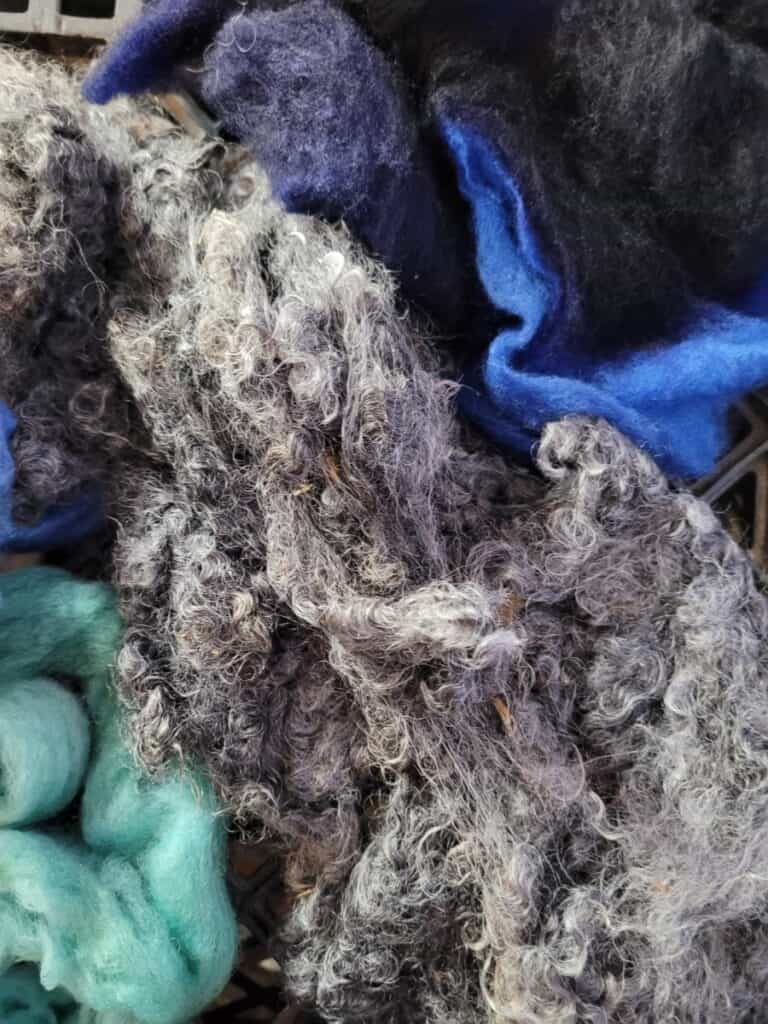
Dyeing wool as fleece
A final option for dyeing your wool is to dye as fleece, then spin the dyed fiber into yarn.
Pros of dyeing fleece
There are advantages to dyeing wool as fleece:
- all of your fiber starts out the same
- can blend to your needs
- have options to dye as yarn or finished project if you choose
- dynamic color in roving and resulting yarn
All of your fiber starts out the same color
If you dye the fleece or wool you start with, then the fiber you are working with all starts out the same. This is just like buying dyed fiber from your favorite shop.
You can blend color
You can blend colors, when you start off with colored wool. I love to make multi colored batts and see what lovely yarn I can spin from them.
I also think that lightly blended colors, more like a heather, are more fun to look at and work with than well blended colors. I also get a kick out of color streaks.
Great news, since you are doing the blending, you get to choose how much or how little!
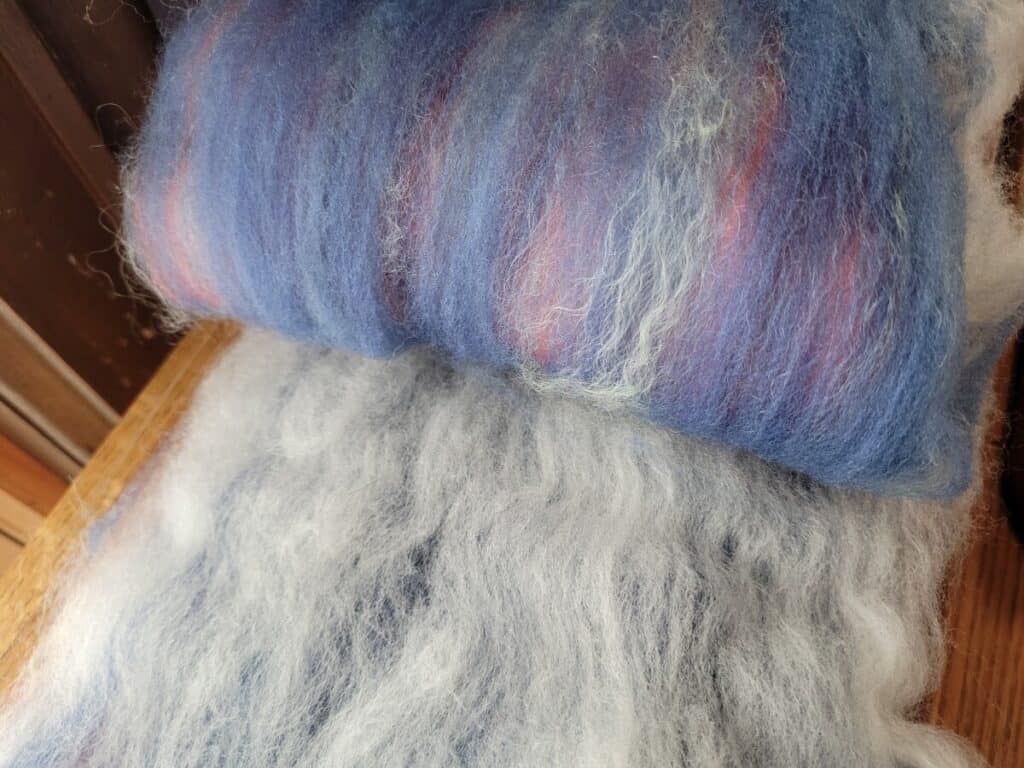
Make dynamic colors
Since you are starting out with dyed wool, you can make the green, for instance, rather than dye the green, which will give you are more alive and rich color in your yarn.
Even if you fully blend the initial colors, you’ll be able to tell by looking that there is just something a bit special about that yarn when you make the color yourself.
You can also add other fibers, a favorite for me is kid mohair! How To Blend Mohair will show you how you can easily add mohair to your handspinning, too!
Cons of dyeing fleece
There are a few drawbacks to dyeing fleece, including:
- you might not like the color you dyed
- larger amounts of wool can be awkward to work with
- there’s no changing your mind later!
You might not like the color your wool dyed to
Sadly, you may not like the color that your wool ended up once the entire process is done.
I have been constantly surprised at how different the wool looks in the dyebath compared to what I get when the wool is dry.
For instance, this big black spot on the wool would have really darkened up my yarn if I was just using this blue wool and wanted a clear, gemlike blue.
As is, I thought that was neat and went with it, even though it was a surprise.
Now I know simply turning that wool over early on in the dyeing would have helped make the coloration more even, but I didn’t know that at the time!
Larger amounts of wool can be awkward
If you are working with a large amount of wool, the volume alone can be awkward.
You need plenty of space in the dyebath for the color to reach all of the fiber, so a large amount of wool equals a really big dye pot!
Once dyed, you can’t change your mind
The final downside that I can think of for dyeing wool rather than yarn or the finished project is that once you dye the wool you can’t change your mind.
You are stuck with the color you get, unless, of course, you are willing to dye again and see if you can modify what you have.
I find this potential downside to be less of an obstacle that you might think, since I like to mess around with the colors, anyway.
If I don’t care for what I dyed, I’ll just start adding color on the drum carder and see what shakes out.
I will acknowledge that adjusting color can lead you down the path of messing up more rather than fixing anything, which can be frustrating, so that makes it a con.
The Joy Of Handspinning has a simple chart on natural dyes with the plant source, resulting color and needed mordant listed.

